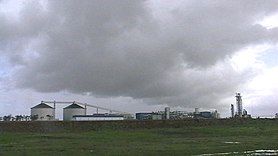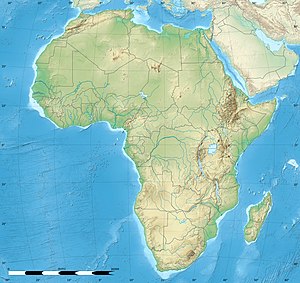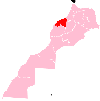Sidi bennour
سيدي بنور (Arabic) | |
|---|---|
| City of Sidi Bennour | |
| Coordinates: 32°39′N 8°26′W / 32.650°N 8.433°W | |
| Country | |
| Region | Casablanca-Settat |
| Province | Sidi Bennour |
| Government | |
| • Mayor | El hassan Boukouta |
| Population | |
| • Total | 55,815 |
| Time zone | UTC+0 (WET) |
| • Summer (DST) | UTC+1 (WEST) |
| Website | https://sidibennour.news |
Sidi Bennour (Arabic: سيدي بنور) is a city in Sidi Bennour Province, Casablanca-Settat, Morocco. Historically speaking, the name derives from the name of a famous sufi saint called Abi Yannur (Arabic: أبي يَنّور); "Sidi" is a common Arabic title attributed to a male Muslim who is a descendant of the Islamic prophet, Muhammad and/or is pious. His full name was Abi Yannur Abdullah Bin Wakris, a Moroccan Berber who lived in the 12th century . He is renowned for being one of the teachers of Abu Ayyub Assariyah _ a famous Moroccan sufi _ whose mausoleum is located in the city of Azemmour. The little information about his life can be found in books about Moroccan sufism such as (Unsu Al Faqir) by Ibn Al Khatib and (Attashawuf Ila Rijal Attasawuf) by Ibn Azayyat. Sayyidi/Sidi Bennour is 67 km (42 mi) south of the city of El Jadida and 120 km (75 mi) northwest of the former imperial city, Marrakech. According to the 2004 census, Sidi Bennour has a population of 39,593; however, since becoming the municipality of the newly formed Sidi Bennour province in 2011, the population has significantly increased.[2]
Every Tuesday, the biggest livestock market of Morocco takes place in Sidi Bennour.
Economy
[edit]
The city has the biggest sugar factory of Morocco.
References
[edit]- ^ "POPULATION LÉGALE DES RÉGIONS, PROVINCES, PRÉFECTURES, MUNICIPALITÉS, ARRONDISSEMENTS ET COMMUNES DU ROYAUME D'APRÈS LES RÉSULTATS DU RGPH 2014" (in Arabic and French). High Commission for Planning, Morocco. 8 April 2015. Retrieved 29 September 2017.
- ^ World Gazetteer








Well, that’s interesting to know that Psilotum nudum are known as whisk ferns. Psilotum nudum is the commoner species of the two. While the P. flaccidum is a rare species and is found in the tropical islands. Both the species are usually epiphytic in habit and grow upon tree ferns. These species may also be terrestrial and grow in humus or in the crevices of the rocks.
View the detailed Guide of Psilotum nudum: Detailed Study Of Psilotum Nudum (Whisk Fern), Classification, Anatomy, Reproduction